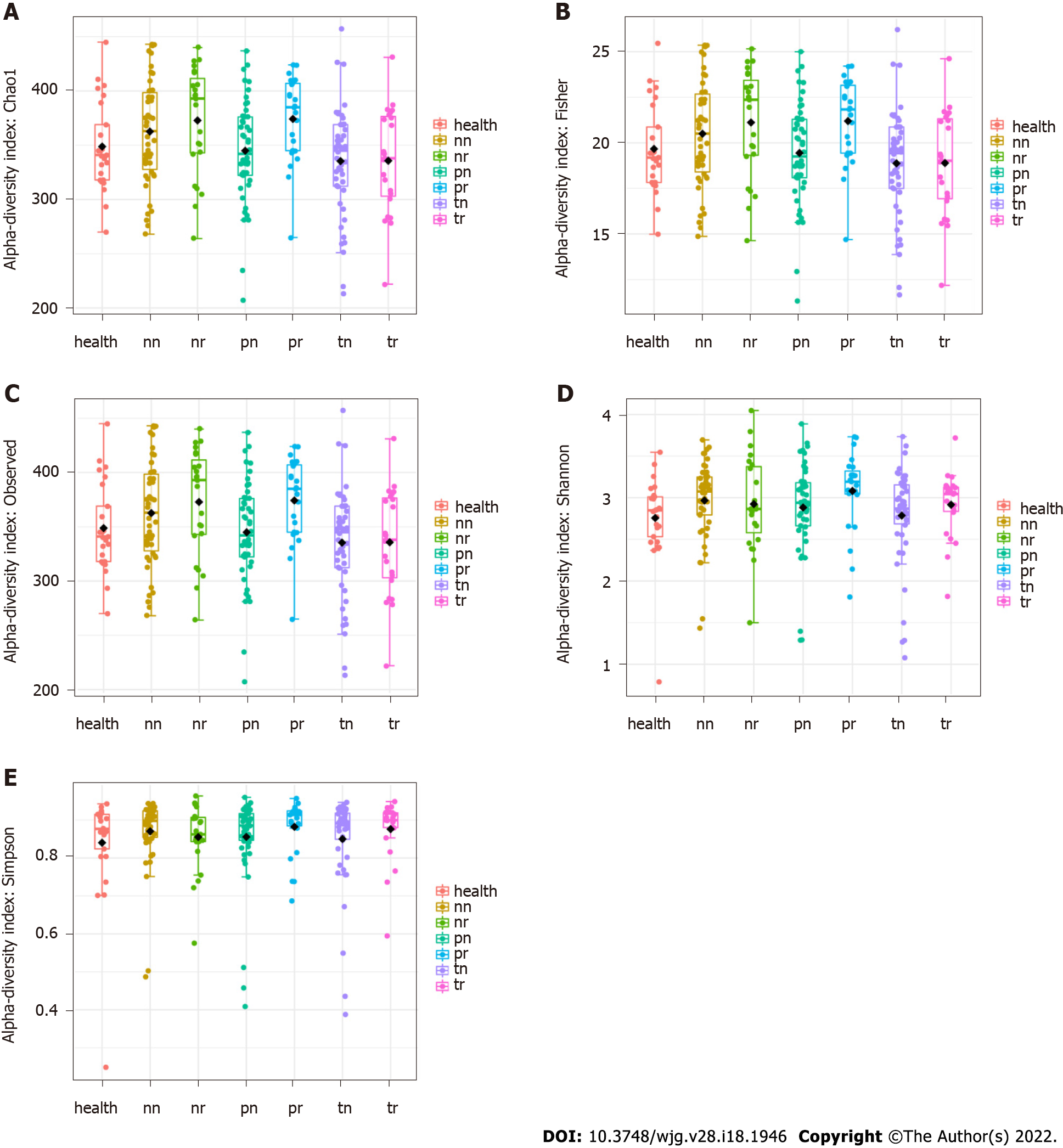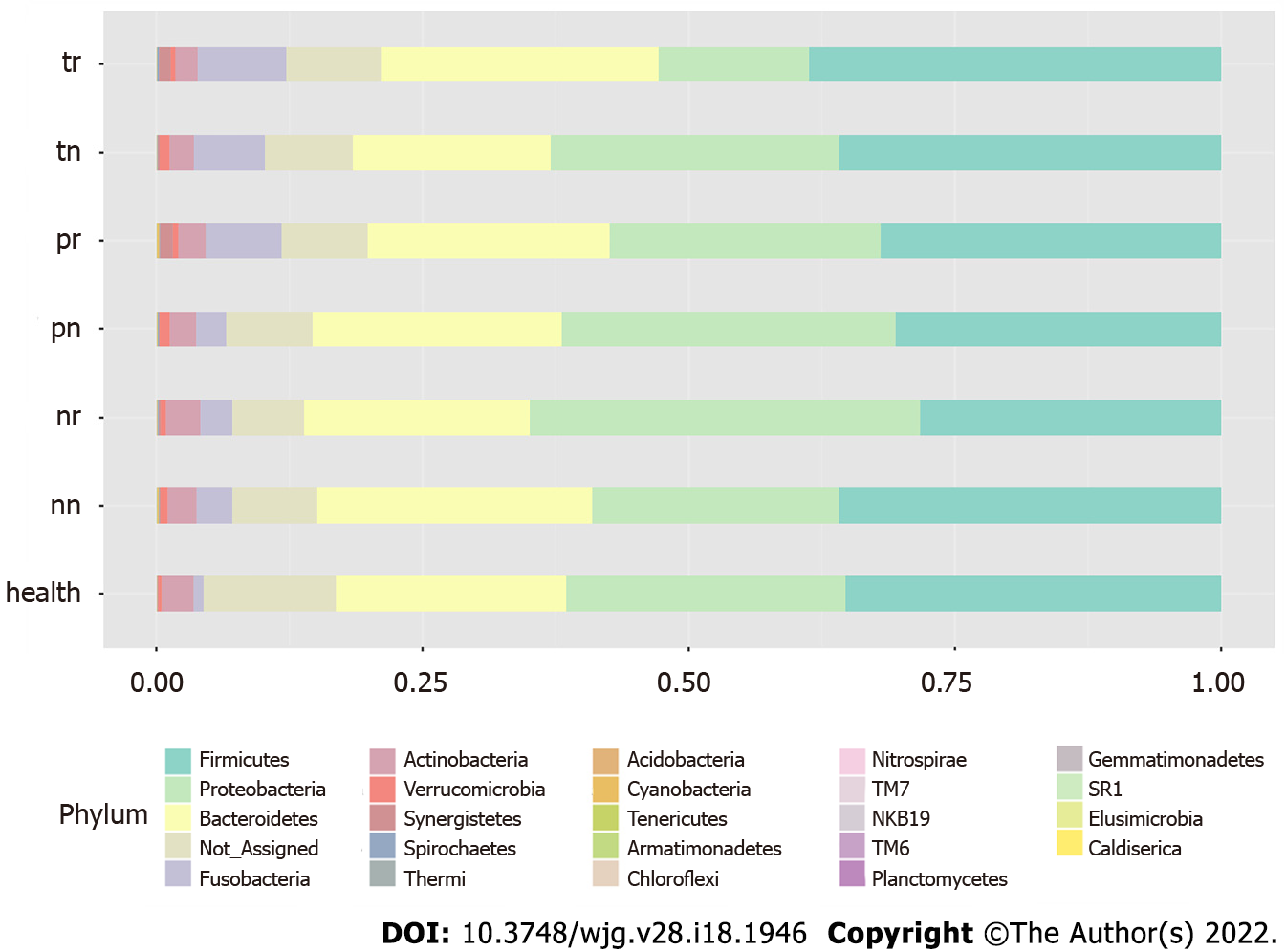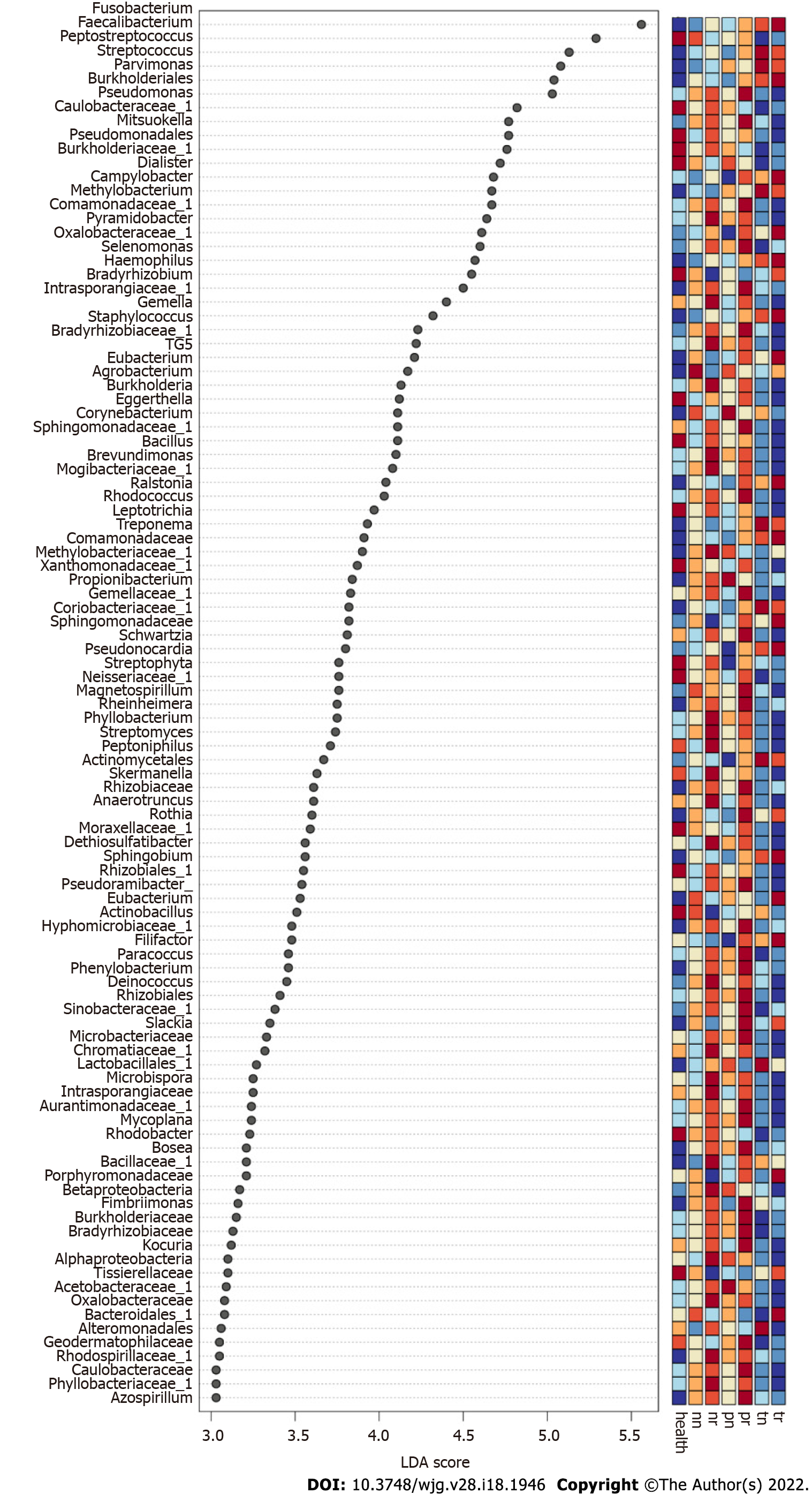Copyright
©The Author(s) 2022.
World J Gastroenterol. May 14, 2022; 28(18): 1946-1964
Published online May 14, 2022. doi: 10.3748/wjg.v28.i18.1946
Published online May 14, 2022. doi: 10.3748/wjg.v28.i18.1946
Figure 1 Microbial alpha-diversities showing significant differences at adjacent-tumor site.
A: Alpha diversity evaluated using Chao1 index; B: Alpha diversity evaluated using Fisher index; C: Alpha diversity evaluated using observed operational taxonomic unit index; D: Alpha diversity evaluated using Shannon index; E: Alpha diversity evaluated using Simpson index. health: Healthy control; nn: Off-tumor site of patient without colorectal cancer (CRC) recurrence; nr: Off-tumor site of patient with CRC recurrence; pn: Adjacent-tumor site of patient without CRC recurrence; pr: Adjacent-tumor site of patient with CRC recurrence; tn: On-tumor site of patient without CRC recurrence; tr: On-tumor site of patient with CRC recurrence. Alpha-diversity differences were compared using student’s t-test.
Figure 2 Principal component analysis showed spatial- and recurrence-specific patterns of microbiota profiles.
health: Healthy control; nn: Off-tumor site of patient without colorectal cancer (CRC) recurrence; nr: Off-tumor site of patient with CRC recurrence; pn: Adjacent-tumor site of patient without CRC recurrence; pr: Adjacent-tumor site of patient with CRC recurrence; tn: On-tumor site of patient without CRC recurrence; tr: On-tumor site of patient with CRC recurrence.
Figure 3 Patterns of bacterial taxonomy at the phylum level collected from spatial-specific sites of patients with or without colorectal cancer recurrence.
health: Healthy control; nn: Off-tumor site of patient without colorectal cancer (CRC) recurrence; nr: Off-tumor site of patient with CRC recurrence; pn: Adjacent-tumor site of patient without CRC recurrence; pr: Adjacent-tumor site of patient with CRC recurrence; tn: On-tumor site of patient without CRC recurrence; tr: On-tumor site of patient with CRC recurrence.
Figure 4 Linear discriminant analysis effect size analysis showed the genera or families with unknown genus with significant differential abundances at off-tumor, adjacent-tumor or on-tumor sites of patients with and without colorectal cancer recurrence.
The colors in the heatmap represent the abundance of genera/families with unknown genus. Red: High abundance; Blue: low abundance. health: Healthy control; nn: Off-tumor site of patient without colorectal cancer (CRC) recurrence; nr: Off-tumor site of patient with CRC recurrence; pn: Adjacent-tumor site of patient without CRC recurrence; pr: Adjacent-tumor site of patient with CRC recurrence; tn: On-tumor site of patient without CRC recurrence; tr: On-tumor site of patient with CRC recurrence; LDA: The linear discriminant analysis.
Figure 5 The relationship between bacterial abundance and overall survival.
A: Kaplan-Meier curves of bacteria at on-tumor site and overall survival (OS); B: Kaplan-Meier curves of bacteria at adjacent-tumor site and OS. aP < 0.05; bP < 0.01; cP < 0.001; dP < 0.0001. X-axis: OS (mo), Y-axis: Survival probability.
Figure 6 The relationship between bacterial abundance and disease-free survival.
A: Kaplan-Meier curves of bacteria at on-tumor site and disease-free survival (DFS); B: Kaplan-Meier curves of bacteria at adjacent-tumor site and DFS. aP < 0.05; bP < 0.01; cP < 0.001; dP < 0.0001.
- Citation: Huo RX, Wang YJ, Hou SB, Wang W, Zhang CZ, Wan XH. Gut mucosal microbiota profiles linked to colorectal cancer recurrence. World J Gastroenterol 2022; 28(18): 1946-1964
- URL: https://www.wjgnet.com/1007-9327/full/v28/i18/1946.htm
- DOI: https://dx.doi.org/10.3748/wjg.v28.i18.1946














